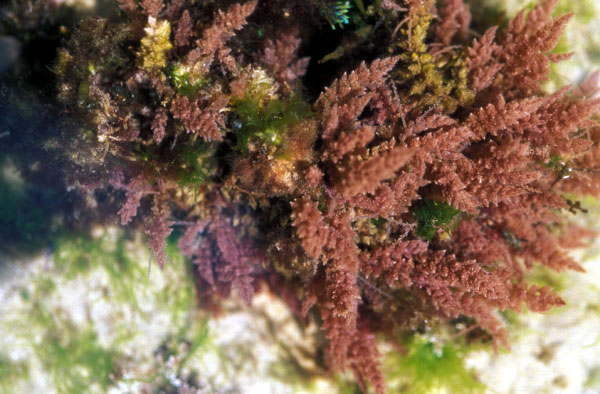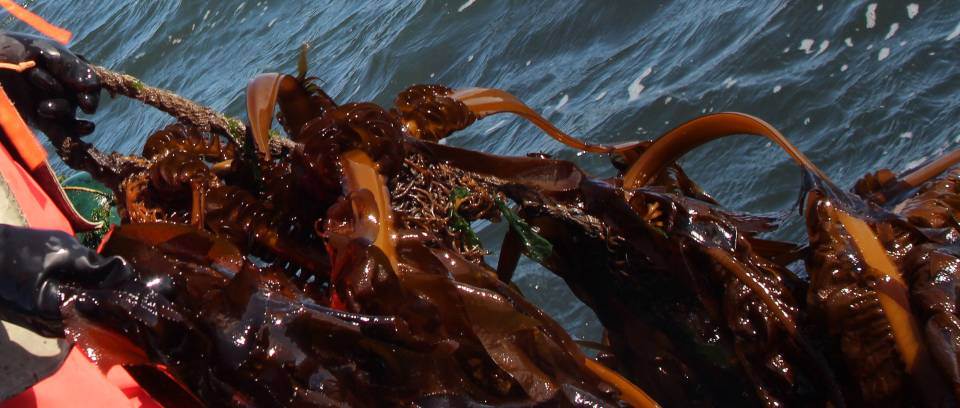Integrated multitrophic aquaculture (IMTA) aims to be an ecologically balanced aquaculture practice that co-cultures species from multiple trophic levels to optimise the recycling of farm waste as a food resource. It provides an opportunity for product diversification and an increase in economic return if managed at the optimal stocking densities for each co-cultured species. A generic IMTA ecosystem model, incorporating dynamic energy budgets for a number of co-culture species from different trophic levels was developed to design IMTA farms for optimisation of multispecies productivity. It is based on the trophic similarity in the ecophysiological behaviour of cultured organisms to describe the uptake and use of energy. This approach can accommodate different species within a trophic group and is transferable to IMTA operations based on finfish–shellfish-detritivore-primary producer systems. Model simulations were firstly performed considering the monoculture of mussels and finfish, each “farm” interacting with the natural variability of the local environment. The next step was running the IMTA model with the co-culture groups added in: one run was with finfish as the key species in co-culture with seaweed and sea cucumbers and the other with mussels as the key culture species in association with seaweed and sea cucumbers. Scenario simulations show that conversion from monoculture to IMTA would considerably reduce waste products and increase farm productivity. Although the development of IMTA practices will depend on acceptable levels of waste products, feasibility and profitability of culture operations, the IMTA model provides a research tool for designing IMTA practices and to understand species interactions and predict productivity of IMTA farms. The refinement of the model and its power to predict multispecies productivity depends on emerging data from trial and commercial sea-based IMTA operations.
Digital library
-
-
Seaweeds are a significant component of current marine aquaculture production and will play an increasing role in global food security as the human population increases rapidly over the next 30 years. Seaweed farming is analogous to plant-based agriculture except that the crop is cultured in a marine environment. It also differs from agriculture in that seaweeds do not require tillable land, fertilization, or freshwater, which are resources that may ultimately constrain the expansion of agriculture. Seaweeds are converted into a variety of goods, such as food and nutritional supplements for humans and livestock, fertilizer, unique biochemicals, and biofuels. Wild and cultured seaweed also offer multiple ecosystem services, such as bioremediation for coastal pollution, localized control of ocean acidification, mitigation of climate change, and habitat for other marine organisms. Incorporation of seaweeds into marine aquaculture farms in the United States is, however, not without its challenges. Seaweed is an unconventional food which necessitates establishing product acceptability, creating a sustained market, and then balancing demand with a consistent supply for long term economic profitability. Seaweed farms also need to be developed in a manner that is compatible with wild capture fisheries, marine mammal migrations, and other users of the marine environment. A comprehensive understanding of the role that cultured seaweeds play in the marine ecosystem is necessary in order to determine not only the economic value of the goods produced but also the ecosystem services offered by marine farming activities. This will result in a better understanding of how an ecosystem approach to aquaculture incorporates the role and need for both the goods and services these macroalgae will provide.
-
Kelp farming is increasing along the temperate coastlines of the Americas and Europe. The economic, ecological, and social frameworks surrounding kelp farming in these new areas are in contrast with the conditions of progenitor kelp farming regions in China, Japan, and Korea. Thus, identifying and addressing the environmental and social impacts of kelp farming in these regions is vital to ensuring the industry’s long-term sustainability. Here, a conceptual model of the human and natural systems supporting this nascent kelp aquaculture sector was developed using Maine, USA as a focal region. Potential negative impacts of kelp aquaculture were identified to be habitat degradation, overfishing of wild seeds, predation and competition with wild fish and genes, and transmission of diseases. Increased food security, improved restoration efforts, greater fisheries productivity, and alternative livelihoods development were determined to be potential positive impacts of kelp aquaculture. Changes in biodiversity and productivity resulting from either negative or positive impacts of kelp aquaculture were confirmed to have downstream effects on local fisheries and coastal communities. Recommendations to improve or protect the ecosystem services tangential to kelp farming include: define ecosystem and management boundaries, assess ecosystem services and environmental carrying capacity, pursue ecologically and socially considerate engineering, and protect the health and genetic diversity of wild kelp beds. Recommendations to ensure that kelp farming improves the well-being of all stakeholders include: increase horizontal expansion, expand and teach Best Management Practices, and develop climate change resiliency. Additionally, an integrated management strategy should be developed for wild and farmed kelp to ensure that kelp aquaculture is developed in the context of other sectors and goals.
-
Fisheries Economics of the United Statesis produced annually by the National Marine Fisheries Serviceand provides national and state level estimates of the total economic impacts ofU.S.seafood landingsand imported seafood on theU.S.economy.However, it does not contain an estimate of the impact ofU.S.aquaculturally produced seafood. As a demonstrationof the potential for incorporating thisinformation intoFisheries Economics of the United States, we took estimates of production and value forfour aquaculture species: crawfish, salmon, oysters and clams.Using published production cost data andthe same input/output model used forFisheries Economics of the United States,weproduced estimatesof economic impacts.We make recommendations for improving the annual production and valueestimates that are used for the input/output model, and for developingstandardized industry surveyson production costs so that reliable impact estimates can be developed on an annual basis and includedas part ofFisheries Economics of the United States.
-
The optimised reduction of dissolved nutrient loads in aquaculture effluents through bioremediation requires selection of appropriate algal species and strains. The objective of the current study was to identify target species and strains from the macroalgal genus Ulva for bioremediation of land-based aquaculture facilities in Eastern Australia. We surveyed land-based aquaculture facilities and natural coastal environments across three geographic locations in Eastern Australia to determine which species of Ulva occur naturally in this region and conducted growth trials at three temperature treatments on a subset of samples from each location to determine whether local strains had superior performance under local environmental conditions. DNA barcoding using the markers ITS and tufA identified six species of Ulva, with U. ohnoi being the most common blade species and U. sp. 3 the most common filamentous species. Both species occurred at multiple land- based aquaculture facilities in Townsville and Brisbane and multiple strains of each species grew well in culture. Specific growth rates of U. ohnoi and U. sp. 3 were high (over 9% and 15% day21 respectively) across temperature treatments. Within species, strains of U. ohnoi had higher growth in temperatures corresponding to local conditions, suggesting that strains may be locally adapted. However, across all temperature treatments Townsville strains had the highest growth rates (11.2– 20.4% day21) and Sydney strains had the lowest growth rates (2.5–8.3% day21). We also found significant differences in growth between strains of U. ohnoi collected from the same geographic location, highlighting the potential to isolate and cultivate fast growing strains. In contrast, there was no clearly identifiable competitive strain of filamentous Ulva, with multiple species and strains having variable performance. The fast growth rates and broad geographical distribution of U. ohnoi make this an ideal species to target for bioremediation activities at land-based aquaculture facilities in Eastern Australia.
-
Land-based aquaculture produces suspended solids in culture pond and settlement pond waters that could be harvested as a bioresource. Suspended solids were quantified, characterised and harvested from these two sources to assess their suitability for conversion to bioproducts. The suspended solids of settlement ponds were less concentrated (87.6±24.7mgL(-1)) than those of culture ponds (131.8±8.8mgL(-1)), but had a higher concentration of microalgae (27.5±4.0%) and consequently higher particulate organic carbon (24.8±4.7%) and particulate nitrogen (4.0±0.8%). The microalgal community also differed between sources with a higher concentration of fatty acids in the biomass from settlement ponds. Consequently, biochar produced from biomass harvested from settlement ponds was higher in organic carbon and nitrogen, with a lower cation exchange capacity. In conclusion, we characterised a renewable and potentially valuable bioresource for algal bioproducts derived from suspended solids in intensive land-based aquaculture.
-
Depletion of fossil fuel sources and their emissions have triggered a vigorous research in finding alter- native and renewable energy sources. In this regard, algae are being exploited as a third generation feedstock for the production of biofuels such as bioethanol, biodiesel, biogas, and biohydrogen. However, algal based biofuel does not reach successful peak due to the higher cost issues in cultivation, harvesting and extraction steps. Therefore, this review presents an extensive detail of deriving biofuels from algal biomass starting from various algae cultivation systems like raceway pond and photobioreactors and its bottlenecks. Evolution of biofuel feedstocks from edible oils to algae have been addressed in the initial section of the manuscript to provide insights on the different generation of biofuel. Different configu- ration of photobioreactor systems used to reduce contamination risk and improve biomass productivity were extensively discussed. Photobioreactor performance greatly relies on the conditions under which it is operated. Hence, the importance of such conditions alike temperature, light intensity, inoculum size, CO2, nutrient concentration, and mixing in bioreactor performance have been described. As the lipid is the main component in biodiesel production, several pretreatment methods such as physical, chemical and biological for disrupting cell membrane to extract lipid were comprehensively reviewed and pre- sented. This review article had put forth the recent advancement in the pretreatment methods like hydrothermal processing of algal biomasses using acid or alkali. Eventually, challenges and future di- mensions in algal cultivation and pretreatment process were discussed in detail for making an economically viable algal biofuel.
-
Airborne hyperspectral and thermal infrared imagery collected over the Florida Current provide a view of the disintegration of a Sargassum drift line in 5 m s−1 winds. The drift line consists mostly of rafts 20–80 m2 in size, though aggregations larger than 1000 m2 also occur. Rafts tend to be elongated, curved in the upwind direction, and 0.1–0.5 °C warmer than the surrounding ocean surface. Long weed ‘trails’ extending upwind from the rafts are evidence of plants dropping out and being left behind more rapidly drifting rafts. The raft line may be a remnant of an earlier Sargassum frontal band, which is detectible as an upwind thermal front and areas of submerged weed. Issues are identified that require future field measurements.Research highlights► A Sargassum drift line disintegrates under a wind speed of 5 m s−1. ► Weed left behind more rapidly drifting rafts form long upwind ‘trails’. ► Wave drag may be creating a distinct raft-and-trail morphology. ► Remnant frontal accumulations of only submerged Sargassum occur upwind.
-
The world is faced with the vast challenge of meeting ever-increasing food demands placed on the agriculture sector due to a rapidly growing population. In fact, the world population has been increasing by an estimated 78 million each year, about the size of the population of Germany. Challenges around food security – ensuring there is enough food to meet demand – will be exacerbated when the population surpasses 9 billion by 2050 and 10 billion by the turn of the century.
Global food production must be 70 percent greater than today’s level to close the deficit between supply and demand, commonly referred to as the productivity gap. And, it must be done without using substantially more land. With current grain stocks at historically low levels and food demand increasing at rates higher than production, the challenge is not decades into the future, but is here today.
-
The relationship between fisheries and aquaculture is acomplex one: cooperative, adversarial, integrated, or isolateddepending on the situation. The roles of the American Fisher-ies Society (AFS) and other stakeholder groups in supportingaquaculture are similarly complex. Although AFS has its histor-ical roots in aquaculture, starting in 1870 as the American FishCulturists’ Association (AFCA), there are those who questionthe role of AFS in supporting the development of commercialaquaculture. From the early days to the present, the primaryaquaculture constituency of the AFCA and now the AFS FishCulture Section (FCS) has been in the public sector, supporting recreational and commercial fisheries or, increasingly, restor-ing threatened or endangered species. If we primarily representfisheries professionals working with state and federal agencies,what is our responsibility and interest toward the developmentof the commercial aquaculture industry? In this article, we ex-plore the following:
- Why should AFS members be engaged in scientificresearch, policy development, management, and devel-opment of commercial aquaculture?
- The evolving roles of federal agencies, industry organi-zations, and professional societies who are involved inaddressing aquaculture’s potential and challenges.
- The role that AFS and its members play in fostering thesustainable development of commercial aquaculture.
AFS currently represents many who culture fish in both thepublic and the private sectors and a great number of fisheriesprofessionals who are involved in fish physiology, genetics, nu-trition, conservation, economics, ecology, and many other alliedfields critical for advancing common fisheries and aquacultureinterests. Even those fisheries professionals with no direct in-volvement in aquaculture per se undoubtedly have an interest inthe biological and economic interactions between fisheries andaquaculture and ensuring that the use of wild and farmed fishesis governed with an eye to sustainability, ecosystem manage-ment, and minimizing adverse impacts from either sector.





